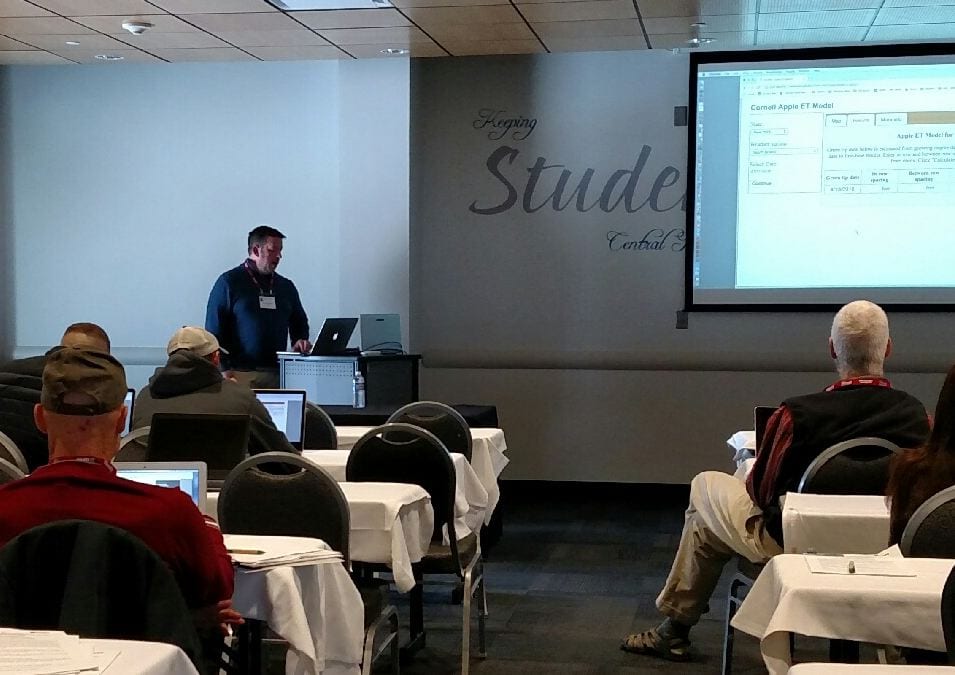In late 2018, NEWA’s Coordinator, Dan Olmstead, and its creator, Dr. Juliet Carroll, concluded an assessment of a 2017 user survey. They, and the NEWA State Coordinators, reviewed user demographics, website content needs, and user experience before passing it on to Cornell’s Survey Research Institute.
The electronic survey included a subset of questions first asked in the 2007 survey. A summary of the 398 participants from 14 states provided a clear picture of NEWA’s impact. A more detailed summary has been shared in four posts at the NEWA Blog http://bitly12UatlMMW
Here’s the bottom line:
-NEWA is a reliable and trusted source of information among uses.
-All respondents said they would recommend NEW to other growers.
-NEWA provides reliable IPM information to support responsible management practices, enhance decision-making, and increase awareness of risks.
-96% of users say NEWA improves the timing of pesticide applications.
-NEWA has a positive impact on IPM practices.



When putting the above statements into dollar figures, consider this:
Growers are saving money on an annual basis—an average of $4329—by reducing use of pesticide spray.
Estimated savings from crop loss, again on average, was $33,048.
Who uses NEWA? 75% are growers and 60% of them manage diversified farm operations.
20% of respondents managed farms smaller than 10 acres.
57% of respondents managed farms between 11 and 1000 acres.
4% had farms greater than 1000 acres.
Most NEWA growers grew apples, but a majority produced two or more commodities such as other tree fruit, grapes, berries, and tomatoes. Existing fruit and vegetable forecast tools will soon be joined by additional tools for field crops and ornamentals.
NEWA also provides links to other tools such as NOAA radar maps, USDA drought maps and websites that target particular problems like late blight or cucumber downy mildew.
FOR A FULL RECAP:
The 2017 NEWA user survey: understanding grower impact, needs, and priorities
The 2017 NEWA survey: current and potential users
The 2017 NEWA survey: IPM impact
The 2017 NEWA survey: use of models, tools, and resources
The 2017 NEWA survey: discussion and future directions
Using weather data is a primary part of IPM. Learn more about NEWA by following the YOUR NEWA BLOG and visit NEWA to see for yourself how this important resource.

